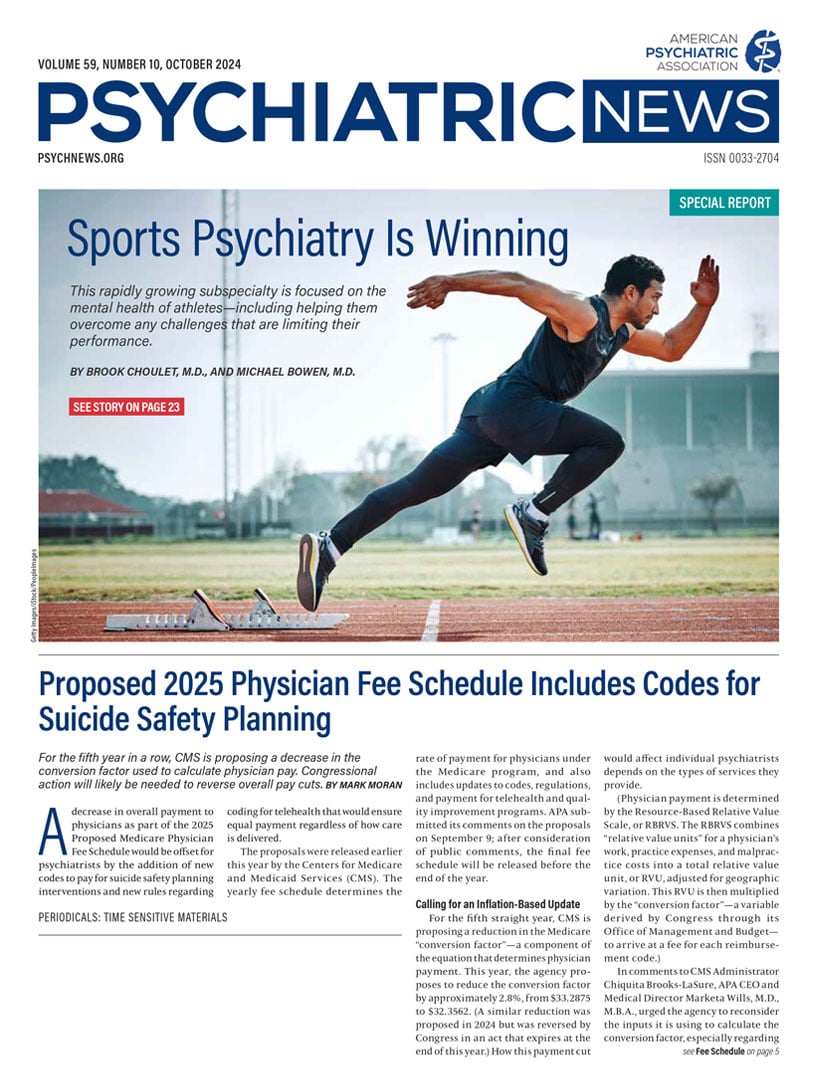Cannabis Use Disorder Associated With Cancers of the Head and Neck
People who are diagnosed with cannabis use disorder (CUD) have an increased risk of cancers of the head and neck, a
study in
JAMA Otolaryngology-Head & Neck Surgery has found.
Researchers at the University of Southern California and colleagues analyzed 20 years of data from the clinical records of more than 4 million individuals throughout 64 health care organizations. They identified 115,865 individuals with CUD, who were each matched to an individual of similar age, race/ethnicity, and alcohol and/or tobacco use.
Compared with individuals in the non-CUD group, those in the CUD group had 3.49 times the risk of any head or neck cancer. Those in the CUD group also had 2.51 times the risk of oral cancer, 4.90 times the risk of oropharyngeal cancer, and 8.39 times the risk of laryngeal cancer. Results were similar when the researchers only assessed adults under 60 or only those 60 and older.
“The clearest potential association between [CUD and head and neck cancer] lies in the inflammatory pathways that are triggered by cannabis smoke, as smoking is the most common method of cannabis consumption,” the researchers wrote. “Compared with smoking tobacco, smoking cannabis may be even more proinflammatory. Cannabis smoking is typically unfiltered and consumed through deeper breaths than tobacco. Additionally, cannabis burns at a higher temperature than tobacco, increasing the risk of inflammatory injury.”
Sedentary Behavior May Be Factor in Whether Older Adults Wish to Die
Adults older than 50 who are sedentary more than eight hours per day may be more likely to feel they were better off dead compared with their more active peers, according to a
study in the
Journal of Psychiatric Research.
Researchers at Anglia Ruskin University in Cambridge, U.K., and colleagues reviewed data from 8,163 adults who participated in Wave 1 of the Irish Longitudinal Study on Ageing, 2009-2011. The researchers based their conclusions on how participants answered two questions: “In the last month, have you felt that you would rather be dead?” and “During the last 7 days, how much time (per day) did you spend sitting on a weekday?” The latter question included time spent at work, at home, visiting friends, and commuting.
Overall, 3.6% of participants had a wish to die and 14.9% of participants were sedentary at least eight hours per day during the week. Those who were sedentary had 2.04 times the odds of feeling they were better off dead than those who had less sedentary time. In addition, each one-hour increase in sedentary behavior per day was associated with 1.11 times the odds of wishing to die. Some of this association was mediated by sedentary individuals being more likely to have sleep problems, depression, feelings of loneliness, and a smaller social network.
“Interventions among middle-aged and older adult populations to reduce sedentary behavior, for example, by displacing sedentary behavior with light physical activity utilizing behavior change techniques, may aid in the prevention and management of [wishing to die], pending future longitudinal research,” the researchers wrote.
Spousal Cardiovascular Event Linked to Higher Risk of Dementia in Men
While cardiovascular disease (CVD) is a known risk factor for dementia at an individual level a
research letter in
JAMA Neurology now suggests that having a spouse experience a CVD event can also raise an individual’s dementia risk.
Researchers at Boston University and colleagues examined data from 46,698 individuals aged 65 or older (96.2% men) in the Japan Health Insurance Association insurance program whose spouses had a CVD event such as stroke, heart failure, or myocardial infarction between April 1, 2016, and March 31, 2022 (the exposed group). The researchers then matched these individuals to peers whose spouses did not experience a CVD event (the unexposed group). None of the individuals had a diagnosis of dementia upon their inclusion in the study.
Over a median follow-up of 24 months, the exposed group had 1.32 times the incidence of dementia than the unexposed group.
The researchers offered several possible reasons for the results:
•
Traumatic occurrences can detrimentally affect cognitive function.
•
Some of the individuals may have encountered bereavement after their spouses’ CVD events.
•
Family members of patients with CVD might have changed their lifestyles (e.g., diet and activity) after the spouses’ CVD events.
The researchers noted that the overwhelmingly male study sample was a significant limitation, and because factors like caregiving burden and social isolation could vary by sex, further research in more diverse samples is needed.
Electronic Health Record Tweak May Increase Likelihood of Prescribing Thiamine in Alcohol Use Disorder
Although thiamine is the standard of care for preventing and treating Wernicke encephalopathy in patients with alcohol use disorder (AUD), it is not prescribed for up to 75% of hospitalized patients with AUD. However, incorporating a decision support tool into the electronic health record (EHR) may increase prescribing rates, a
study in the
Journal of Substance Use and Addiction Treatment has found.
Wernicke encephalopathy is a potentially fatal neurological condition characterized by physical imbalance, confusion, and eye-movement problems.
Researchers at Montefiore Medical Center and Albert Einstein College of Medicine and colleagues examined thiamine prescribing rates at an urban hospital one year before and one year after an electronic prescription panel called “Thiamine/Supplements for Alcohol Abuse” was added as the top result when health professionals searched for thiamine on the ordering screen. Selecting this would enable a health professional to order a high-dose thiamine infusion along with thiamine, folic acid, and multivitamin tablets.
Data was amassed from May 2014 through April 2016, during which time there were 5,307 admissions for patients with alcohol-related diagnoses and 698 admissions for patients with elevated alcohol levels.
After the panel was added to the EHR, 4.7% of admissions with alcohol-related diagnoses received high-dose thiamine prescriptions within the first 24 hours, compared with 1.1% of such admissions before the panel was added. Among admissions with elevated alcohol levels, 14.3% received high-dose thiamine prescriptions after the panel was added, compared with 2.5% before.
“Given that the decision support was easy to develop and unobtrusive, consideration should be given to making it standard in electronic ordering systems,” the researchers wrote.
Sarcosine May Be Helpful Addition to SSRIs in Treating Major Depressive Disorder
A small clinical
study in the
Journal of Psychiatric Research suggests that sarcosine, an over-the-counter amino acid available as a dietary supplement, may be a safe add-on therapy to standard SSRIs for patients who have major depressive disorder.
Researchers at the All India Institute of Medical Sciences randomized 60 adult patients with major depressive disorder and on a stable dose of an SSRI to receive 500 mg sarcosine once daily or placebo for eight weeks. All patients had a Montgomery-Åsberg Depression Rating Scale (MADRS) score between 7 and 34 upon enrollment, indicating mild to moderate depression. The treatment group had a mean baseline score of 20.3, while the placebo group had a baseline score of 18.8.
At eight weeks, MADRS scores decreased a mean of 13.3 points in the treatment group and a mean of 8.7 points in the placebo group, which was a statistically significant difference. Furthermore, 60% of adults in the treatment group showed a remission of depression symptoms. Nine adverse events were reported, including drowsiness, dizziness, scleritis, and fatigue. There were no significant differences in adverse events between groups.
“[S]arcosine may be considered an efficacious and safe add-on agent to SSRIs for managing [major depressive disorder],” the researchers wrote. “However, a multicentric study with a long-duration follow-up may be done for better generalizability and translation into clinical practice.”
Maltreatment in Childhood May Lead to Desire for More Personal Space Later
Childhood maltreatment may promote a desire for greater interpersonal space in adulthood, according to a
study in
Translational Psychiatry. This phenomenon may hold true across the globe, regardless of cultural norms regarding personal space.
Researchers with the Global Collaboration on Traumatic Stress analyzed data from 2,986 participants from across the world. The participants completed various questionnaires that assessed childhood and lifetime trauma, posttraumatic stress disorder, social anxiety, social support, interpersonal stress in close relationships, attachment styles, and fear of COVID-19.
Participants also completed a task wherein they saw a circular room on a screen with a line figure meant to represent themselves in the center. Another line figure appeared at the entrance, which the participants were told to imagine as a friend or a stranger. The participants pressed the spacebar when they began to feel uncomfortable with the distance between themselves and the approaching figure.
Overall, 67.31% of the sample experienced any type of childhood maltreatment. The researchers found that higher levels of childhood maltreatment were linked to a desire for greater interpersonal space toward both friends and strangers. The researchers also found that insecure attachment and less social support were associated with a need for greater interpersonal space.
“Given the importance of social relationships on mental health, exploring ways to support individuals affected by [childhood maltreatment] in the regulation of interpersonal distance might contribute to the development of effective preventive and therapeutic interventions,” the researchers wrote. “Such research would be especially important considering the similar effects we found across cultures.” ■






